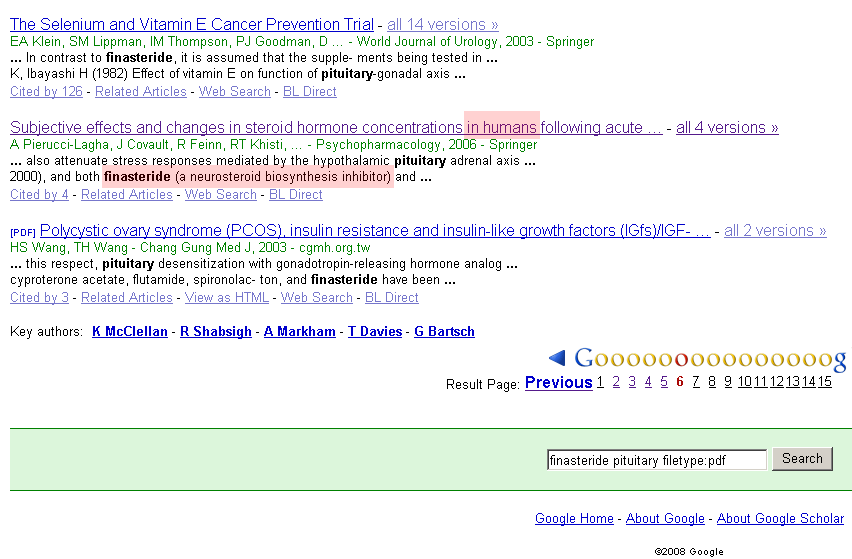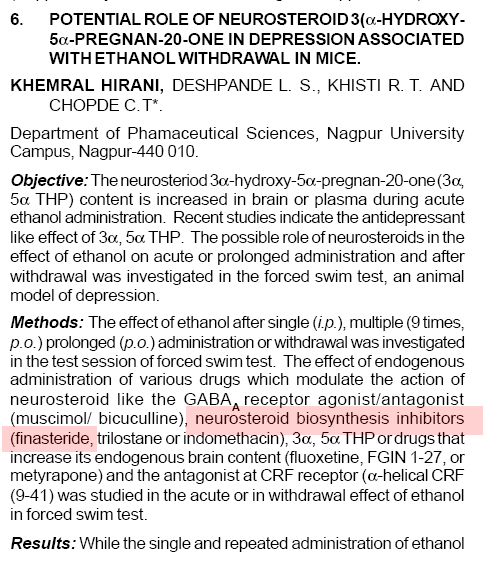dialogues-cns.org/brochures/ … ge=103PAGE 109
[Size=4]Effects of ethanol on neuroactive steroids in humans[/size]
… Finasteride reduces the formation of both 3α,5α-
THP and 3α,5α-THDOC by inhibiting the reduction of
progesterone and DOC to intermediate precursors.Indeed, finasteride pretreatment blocked subjective
effects of alcohol using three different scales to measure
the activating, sedating, anesthetic, and peripheral
dynamic aspects of alcohol actions.
…The ability of finasteride
to reduce the subjective effects of alcohol was not
observed in individuals carrying the GABAA α2 subunit
polymorphism associated with alcoholism, suggesting
that individuals carrying this polymorphism have reduced
sensitivity to both alcohol and finasteride.95
…Humans, but not rodents, synthesize multiple 5β-reduced
neuroactive steroids including 3α,5β-THP and 3α,5β-
THDOC. 3α,5β-THP levels are comparable to those of
3α,5α-THP in human plasma and cerebrospinal fluid.15,16
…These neuroactive steroids also modulate GABAergic
transmission,8,13,14 but have not been measured in humans
after ethanol administration.
…Additionally, the primary stress steroids in humans are cortisol and 11-deoxycortisol, while progesterone and corticosterone are the primary
stress steroids in rodents.
…3α,5β-reduced cortisol is a negative
modulator of GABAA receptors,17 and could contribute
to the subjective effects of ethanol in humans.Thus,
the combined effects of 3α,5α- and 3α,5β-reduced neuroactive
steroids may contribute to the effects of ethanol
in humans and nonhuman primates.These steroids have
never been measured following ethanol, stress, or HPA
axis activation in humans or nonhuman primates.
…Other GABAergic 3α,5α- and 3α,5β-reduced neuroactive
steroids, derived from DOC, dehydroepiandrosterone
(DHEA), and testosterone, are known GABAergic modulators100-
102 that may be elevated by HPA axis activation
in humans. Unfortunately, simple inexpensive analytic
methods to measure these steroids are not available.
The ability of finasteride to block the subjective effects of
ethanol in humans may be due to its ability to prevent
the formation of any or all of these neuroactive steroids.


